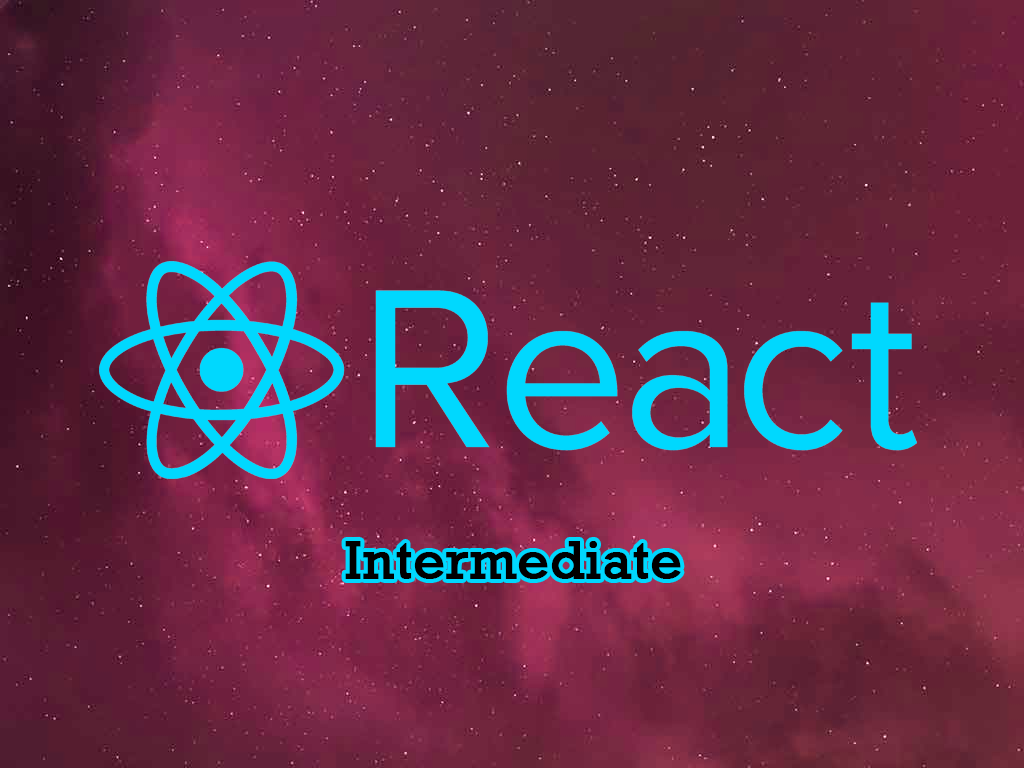Intermediate React
Conclusions and Next Steps in Advanced React
 React intermediate
React intermediate
Throughout this course, we have explored intermediate and advanced React concepts that provide a solid foundation for building scalable, efficient, and maintainable applications. From advanced state management to performance optimization and the creation of reusable components, this course has covered the essential practices that every React developer should know to take their skills to the next level.
Summary of Key Concepts
- State Management and Context API: We learned to handle state efficiently using
useReducer,useContext, and Context API to share data between components without excessive prop drilling. - Component Optimization and Performance: We explored techniques to avoid unnecessary re-renders, such as
React.memo,useMemo, anduseCallback, as well as code-splitting withReact.lazyandSuspense. - Advanced Component Patterns: We learned to create modular, reusable, and flexible components through composition, Render Props, and controlled and uncontrolled components.
- Testing and Mocking: We focused on unit and integration testing strategies, including mocking and using MSW to simulate APIs, ensuring that components and their interactions work as expected.
- Accessibility and Best Practices: We discussed the importance of accessibility and the use of ARIA attributes, as well as practices that improve the user experience for everyone.
Next Steps in Advanced React Learning
This course has laid a solid intermediate foundation, and there are multiple areas for deeper exploration in advanced React development:
- React Concurrent Mode: This mode, still in experimental phase, promises to improve performance by splitting work into small tasks, optimizing interface responsiveness.
- Server-Side Rendering (SSR) with Next.js: Next.js extends React with advanced SSR capabilities, optimizing content loading to improve SEO and user experience.
- GraphQL in React: Integration with GraphQL allows for more efficient data handling and performance optimization compared to REST APIs.
- React Native: Learning React Native opens the door to mobile app development, reusing React knowledge in the development of native apps for iOS and Android.
Recommended Resources
To continue advancing in React, here are some recommended resources:
- Official React Documentation: Provides guides and examples on all aspects of React, including updates on new features.
- Next.js Documentation: For those wanting to explore SSR and other advanced features in React.
- React Query and Apollo Client: Two excellent tools for data management with React in the context of REST and GraphQL.
- Advanced React Course: Consider enrolling in an advanced level course covering topics like Concurrent Mode, advanced Suspense, and SSR.
Final Reflection
Development in React is a constantly evolving path. This intermediate course has equipped you with the necessary tools to build interactive and efficient applications with solid architecture and best practices that enhance user experience. With this knowledge, you are better prepared to tackle larger-scale applications and further explore the advanced possibilities that React offers.
As you continue your learning journey, remember that development in React is an ongoing practice and that the React community continues to grow, contributing new resources and practices. Keep exploring, building, and improving!
Thank you for completing the course, and we encourage you to take the next step in Advanced React to continue your growth as a developer.
You can also deepen in the following topics:
- React Hooks
- React Routing
- State Management in React
- React Context API
- Performance in React
- Testing in React
Support Chuck’s Academy!
Enjoying this course? I put a lot of effort into making programming education free and accessible. If you found this helpful, consider buying me a coffee to support future lessons. Every contribution helps keep this academy running! ☕🚀

Chat with Chuck

- Advanced State Management with Context API and useReducer
- Performance Optimization in React
- Lazy Loading and Code Splitting
- React Profiler and Performance Analysis
- Context API y State Management Escalable
- Render Props and Higher-Order Components (HOC)
- Error Handling in Components with Error Boundaries
- Refs and Direct DOM Manipulation
- React.memo and useMemo for Performance Improvement
- Suspense Implementation for Data Fetching
- Complex Component Communication
- Advanced Conditional Rendering
- Integration with Animation Libraries
- Advanced Custom Hooks Patterns
- Data Handling and RESTful APIs in React
- Data Caching and Persistence Strategies in React
- Accessibility Management in Interactive Components
- Advanced Performance Optimization in React
- Testing Components with Mocking and Integration Tests
- Best Practices in React Component Architecture
- Creation of Reusable React Components
- Conclusions and Next Steps in Advanced React













